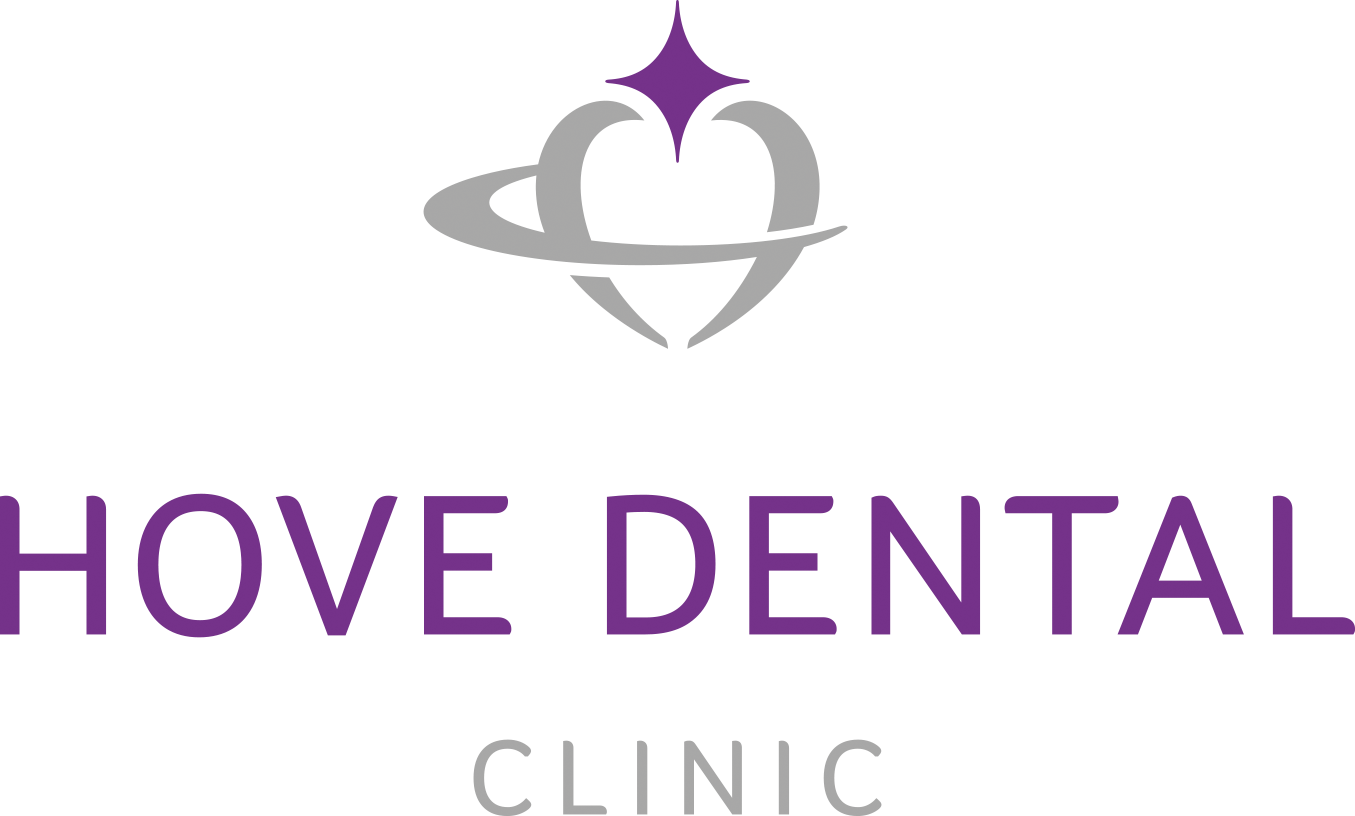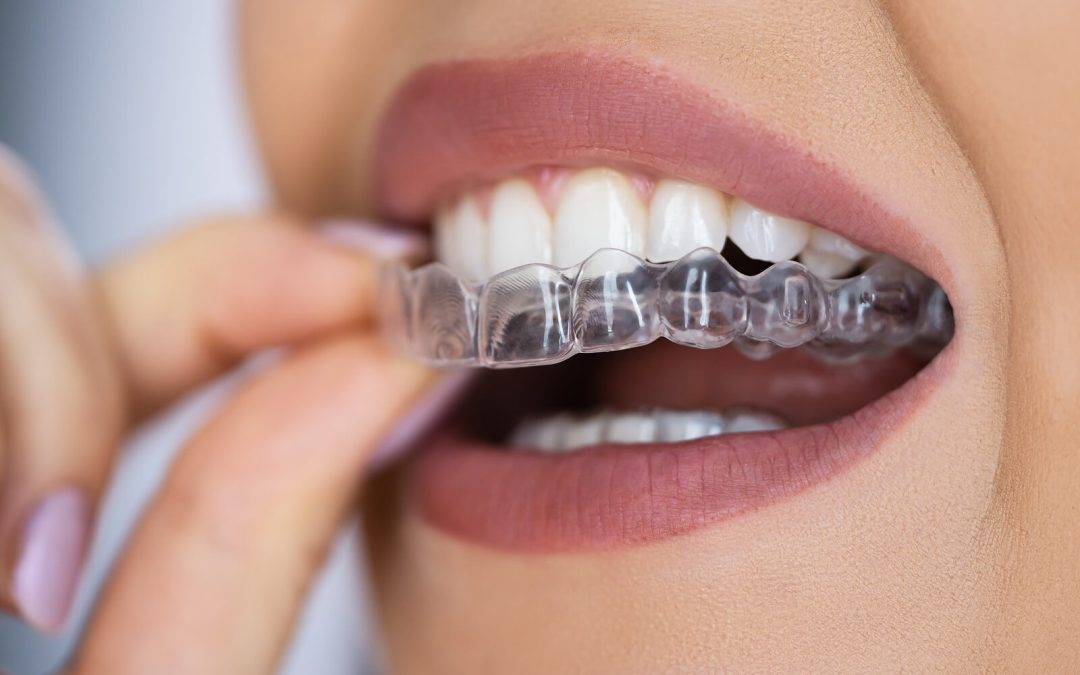Dental aligners, also known as clear or invisible aligners, have been popularised in recent years as a discreet alternative to traditional metal braces. The transparent plastic used to form the aligner moulds is less noticeable, eliminating aesthetic concerns from the teeth straightening process.
The first complete aligner system, Invisalign, was invented in 1997, and since then a number of systems have become available through orthodontists, as well as flexible at-home solutions. Hove Dental Clinic specialise in the fantastic Smilelign system, a fast and effective way to straighten teeth, leaving you with a smile you’ll want to show off.
For more information on our service and to discuss your dental aligner options, you can contact our friendly team online today.
What Are Aligners and Why Are They Used?
Clear teeth aligners are orthodontic devices used to reposition and straighten teeth, with minimal impact on the wearer’s everyday life. This is because the retainer-like device is designed to be removable, and is almost invisible during use.
Aligners can be beneficial in many circumstances, with typical treatable cases including:
- To straighten teeth which are crooked, overcrowded or gapped.
- To treat bite issues such as overbites, underbites or crossbites.
- To recorrect teeth which have moved after having braces.
Dental aligners are most successful when treating mild to moderate issues of overcrowding and spacing. For more severe cases of jaw misalignment, surgery often is a more effective solution. It is always recommended to first speak with an orthodontist to understand the best course of action for you.
How Do Teeth Aligners Work?

Similar to traditional braces, aligners work by exerting gentle pressure to gradually straighten teeth over a period of time. Tooth movement is directed by each individual aligner, and teeth will move approximately 0.2mm to 0.3mm with each new set. Tooth-coloured attachments may be applied to your teeth to anchor the aligners and facilitate the tooth alignment process.
Getting aligners is simple, and considerably less invasive than traditional metal braces. Usually, only one or two appointments with an orthodontist are required before beginning the course of aligners.
The process is usually as follows:
- Your orthodontist will take bite impressions or create a 3D image of your mouth using a digital scan. This produces a detailed analysis of the bespoke orthodontic treatment required to straighten your teeth.
- The analysis taken from your dental impression will be translated into a recommended course of dental aligner moulds. Typically, a series can include as few as 12 aligners, or as many as 48, to use over time, depending on the severity of the use case.
- You will receive your dental aligners from your orthodontist. A set of prealigners is also often provided, to help you get accustomed to the feel before starting the alignment process.
- Each set of aligners is worn for around two weeks. Treatment times vary depending on individual cases, but the average course takes around 6 to 18 months to complete.
- Once the aligner course is finished, a retainer should be used for around 6 months to maintain teeth positioning, or you may be provided with an overcorrection aligner.
What Are the Benefits of Aligners Compared to Metal Braces?
Although the fundamental function of clear aligners and metal braces is the same, there is some distinction between the two. Many of these differences are seen as reasons to opt for teeth aligners, such as:
- Aesthetics: For those who consider traditional metal braces a little too eye-catching, clear aligners are a more discreet teeth straightening solution. Aligners do not use brackets and wires and are able to be removed at any point.
- Oral hygiene: Teeth aligners relieve some of the additional care required for traditional braces. Brushing and flossing are easier with removable aligners, and there are fewer restrictions on food and drink.
- Fewer appointments: Although there can be variation, aligners usually require fewer orthodontic appointments during the teeth straightening process. Brace tightening is not necessary and there is less chance of emergency fixes being required.
However, there are certain drawbacks to keep in mind compared to metal braces. For example, aligners require a little more dedication from the wearer, who must remember to replace them when removed for brushing or eating.
It’s also likely that metal braces will be more effective for those with more complex alignment issues. There will also be some differences in cost, depending on the system in use and duration of treatment.
How Much Do Invisible Aligners Cost?
The cost of invisible aligners varies depending on several factors. As a rule of thumb, prices in the UK tend to range from £1,000 to £5,000.
At Hove Dental Clinic, we offer affordable treatment plans and outstanding customer care, specialising in nervous patients. To find out more about our pricing for Smilelign and to discuss a custom treatment plan, contact our helpful team today.
FAQs
Can you eat, drink or smoke with aligners in?
It is generally recommended to remove your aligners when eating, to ensure cleanliness and avoid trapping food particles.
Most drinks should not cause issues when wearing aligners. However, darker drinks such as coffee and red wine may stain, in which case it is recommended to remove aligners.
Smoking is not recommended when wearing aligners, as the nicotine and tar can stain the clear trays.
What do I do with my old aligners?
After you’ve finished with an aligner tray, you should hold onto it until you’ve completed the alignment process. This helps your orthodontist if a movement was not fully achieved. Your orthodontist will then advise you on how to dispose of your old aligners at the end of the treatment.
How do I clean my aligners?
There are several steps you should take to clean your aligners on a nightly basis. These include:
- Rinsing them with water
- Brushing them with their own soft-bristled toothbrush and a gentle liquid soap
- Storing them in a protective case when not in use
For a more thorough clean, cleaning accessories and effervescent tablets can be purchased online.
Do aligners hurt or cause headaches?
The pressure exerted by a set of aligners is constant but gentle. However, there may be some temporary mild discomfort, such as jaw pain or headaches, particularly in the initial days of wearing your aligners, or after changing to a new set.






















